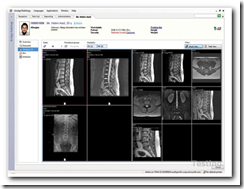As we have all heard in the certification processes for medical records, the goals to achieve are getting a little tougher, just like designing the software is. Also note the cost of the transaction, 10k, so it is not inexpensive and the EHR software companies have to not only prepare, but bankroll for the cost as well.
There are grants that will reduce the costs for those non profits to attain, which will help with those who are not commercially supported. One transaction gets the certification, if it is successful that is. This is probably why in the last few weeks there have been quite a few press announcements of different areas testing, like the VA to the DOD, Kaiser to the VA, etc. I t may take a while to get the testing done in this area as there are a number of variables and this is the first go round. The reasons for the additional category here is due to physician practices and hospitals needing to communicate and in many areas hospitals are subsidizing the physicians to bring them on board. There still needs to be relief and funds though for those hospitals who cannot afford the process, beyond what a tax break is currently providing.
The software is getting more complicated and further sophisticated all the time, as is any software and hopefully at some point in time there will be an effort to create a unified user interface, ask any doctor if they would like having the same or similar interface where ever they go and I would venture to say one would hear one big “Yes”. Having to learn different system at different hospitals is a big part of the problem as many physicians are on staff at more than one, thus one more reason that electronic medical records are slow to catch on, and hey this even gets to the administrative folks too, who are just there for support, way too much software and few common standards to get the job done and then somewhere along the line take care of patients too.
Here’s one we can look at that already had a lot of work already done, called the Common User Interface Project and it looks nice too and easy enough in format. If systems all looked like this or had a big resemblance, that sure would be one battle out of the way for acceptance and it also eliminates the need to start from scratch and write an entire new government  electronic medical records system, as we have seen in the last few weeks with Wall Street, they have been out coded one too many times and we now have the bill. This project is better left for commercial vendors to put their heads together and work on a common solution.
electronic medical records system, as we have seen in the last few weeks with Wall Street, they have been out coded one too many times and we now have the bill. This project is better left for commercial vendors to put their heads together and work on a common solution.
Somewhere on the list the PHRs will come in to the picture, but I am guessing that will take place after the initial process here and guidelines are still in the works. BD
Tomorrow, CCHIT will open the first-ever application period for certification of health information exchanges (HIE). That program is a two-phased process, with network security testing to begin shortly after applications come in, CCHIT chairman Mark Leavitt told Digital HealthCare & Productivity. To earn certification, HIEs also will have to prove themselves capable of transmitting and receiving at least one of three specific transactions: laboratory documents, laboratory reports, or patient summaries.
Each transaction test will cost $10,000, Leavitt says. Grants will reduce the cost of the first test by $1,000, the second by $3,000, and the third by $5,000. HIEs will only need to demonstrate capabilities with one transaction to earn certification.
The ambulatory certifications announced today are the first under the 2008 CCHIT criteria. The new standards include, for the first time, “advanced” electronic prescribing requirements—namely medication lists, medication history, patient eligibility, and formularies—as well as the ability to send and receive electronic patient summaries.



Common, standardized user interfaces are extremely important, especially when one has the possibility of being required to use more than one vendor's system for the same functions at multiple facilities. Look and feel should not be the sole consideration - standard functions must be consistent throughout the software as well. Don't require a tab for one function, Enter for a similar function elsewhere, and an OK button in a third instance. That is a big frustration for users, and it's completely unnecessary. Keyboard shortcuts and context-sensitive menus also require similar standardization. IMHO one of the most important considerations: don't change the UI solely for the sake of changing the UI (e.g. Office 2003 vs Office 2007).
ReplyDelete